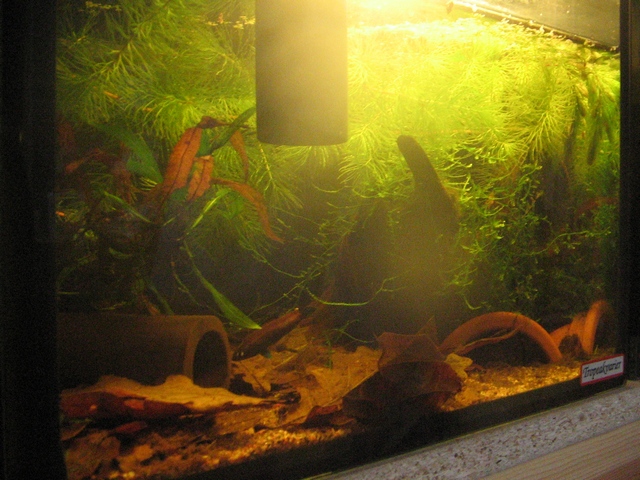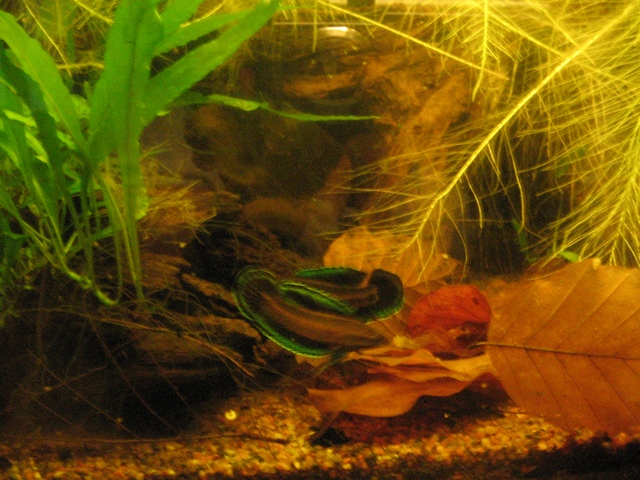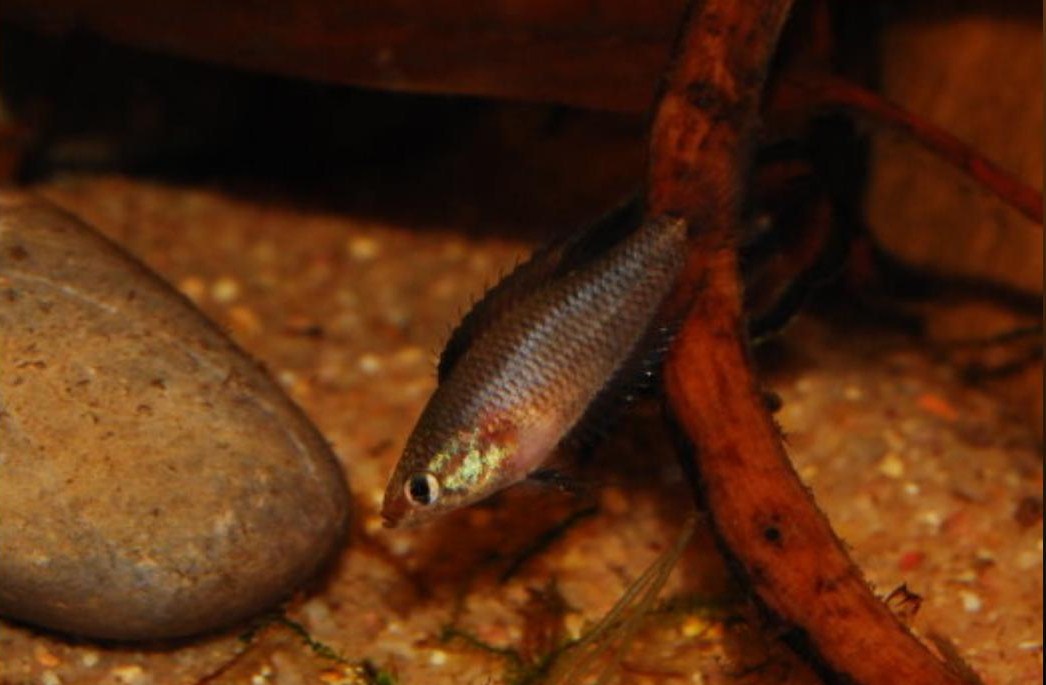The behaviour of the licorice gouramis is a story in itself

Parosphromenus are small, cave inhabiting labyrinth fish with a fully developed labyrinth organ. The high oxygen content of their natural habitats in flowing waters makes it unnecessary to use the labyrinth often. This is still the case in the aquarium. Some fish never use the labyrinth. However the males of most species build more or less rudimentary bubble nests in their caves and take up air from the surface frequently during this period. In their normal life they do not use the labyrinth unless a significant deterioration of the environmental parameters forces them to do so.
They are quiet fish, which are not constantly in motion. They do not like the company of fast, hectically swimming fish. On the other hand some small fish, which use the open water space (like a small troup of Boraras species) can give them the feeling of safety from predators and draws them out of their hiding places more often. Individual fish seem to seek foshelter and they often stick closely to leaves, wooden branches or a cave wall. They often show a floating way of swimming and stop frequently to perform strange slow motions around the eye axis. Until now we have no idea what this behaviour means.
Depending on their mood or behavioral context the fish show more or less significant colour or changes in livery. Besides the normal dress, in which the stripes are clearly pronounced, a significantly darker aggression dress and the most colour intense courtship dress can be distinguished – the different colour patterns can change within seconds. The so-called ”sexy eyes”, named by Dietrich Schaller, are very striking. They comprise a broad inclined black bar, which indicates the immediate spawning mood, especially in females, but also in males. It is also remarkable that most of the females lose almost all colours during courtship and take on a pale, beige or even yellow dress. The form P. paludicola Wakaf Tapei is an exception in this respect: although other paludicola forms have pale courtship dress in females, in this particular form the females become dark – a difference which made J. Vierke and P. Finke suspect that it might be a separate genus. However, until there is genetic proof for this, one cannot be sure about it. At least this particularity could eventually indicate a relatively advanced speciation.

Striking similarities, but also differences between the species are reflected in their courtship behaviour. We can distinguish 3 groups or types according to the position the male takes during courtship: head-down, head-up and horizontal courtship. Most Parosphromenus show head-down courtship. The male stands beside the female, almost completely head down and spreads all fins. All forms of the bintan- and harvey- family belong to this group, but also species like P.anjunganensis or P.filamentosus. Some species with particularly log dorsal fin like P.paludicola, P.deissneri or P.quincedim perform a rather horizontal courtship.

The two lean Parosphromenus species, P.parvulus and P.ornaticauda show, in addition to their different body shape and head-up courtship, a particularly striking behaviour in contrast to all other members of the genus: very fast, courtship dances over a wide area. The male surrounds the female in a zig-zag circle taking one or two seconds. For all other licorice gouramis the courtship is much calmer and only a little room is needed. This behaviour also supports the assumption that these two species form a separate group in the genus Parosphromenus or even a sub-genus. A strange intermediate position is shown by P.sumatranus. This species is often slim, like a lean Parosphromenus form and does head-up courtship (without zig-zag dance), too. But this species shows the typical striped dress like the other Parosphromenus. Therefore we assume that forms, which have been very similar to these fish, might have played a particularly interesting role during the evolution of the liquorice gouramis. But there also seem to be populations of this species with a higher back. Still many mysteries are to be revealed here.
(PF)

